Matador Network's Blog, page 1241
October 15, 2018
Town in the Swiss Alps now hotel
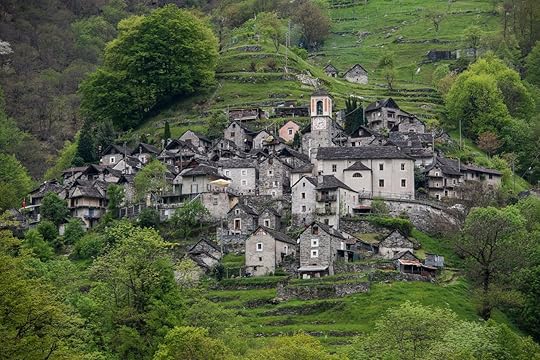
Corippo, a hillside village on the Italy-Switzerland border, might have very few remaining residents, but they’re not letting their community slip into extinction so easily. Once a farming town of 300 people, the population has since dwindled to 12, with the only economic activity generated by the local restaurant. Now, they’re pulling out all the stops to ensure their survival by turning the entire village into a tourist destination. With the help of Fondazione Corippo, a local nonprofit, Corippo is repurposing 30 of its 70 buildings as a “scattered hotel” called Casa Arcotti.
Borrowing the scattered hotel model from Italy, Corippo will turn many of its centuries-old buildings into vacation cottages and hotel rooms. Fabio Giacomazzi, an architect and president of Fondazione Corippo, told CNN that the town’s repurposing will give visitors “the chance to experience a very particular sojourn in a genuine rural village that remained practically the same since 1800.”
While the project is still in its initial stages, the first two-bedroom cottage opened to guests in July. The restaurant will soon be transformed into the hotel’s dining room and reception area, and the town’s public squares will become open-air communal spaces. A mill, bakery, and chestnut-drying room will also be repurposed.
The feasibility of the project is still uncertain, but Giacomazzi is optimistic that it will boost resident numbers. “We hope the hotel will offer the opportunity for a young family to undertake the management and to settle in Corippo together with some employees,” he said.
Although only $2.7 million of the total $6.5 million has been raised for the project’s completion, the town is encouraged by the concept’s popularity. In 2017, the project won the Swiss hotel and restaurant association Gastrosuisse’s Hotel Innovation Award, and has garnered much international attention.
Casa Arcotti is scheduled to open by Easter 2020. 
H/T: Curbed

More like this: The 7 most adorable villages in Switzerland
The post An entire town in the Swiss Alps is turning into a hotel appeared first on Matador Network.

Weirdest Arizonian obsessions
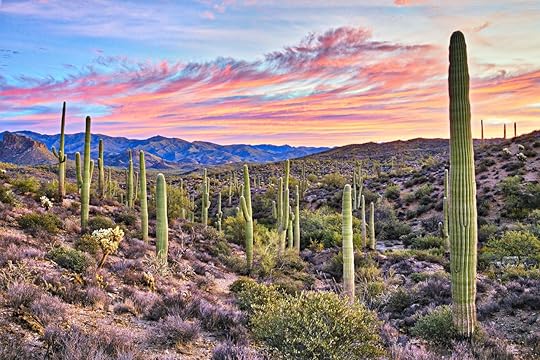
Arizonans are generally a laid-back group of people, but we have our quirks. Maybe this is due to our crazy cool landscapes or erratic weather patterns, but we have our own set of passions, hangups, and what could only be considered obsessions. Here are a few that pretty much all Arizonans share.
1. Being totally in tune with the past, present, and future weather
Tucsonans know it’s always 10 degrees cooler in town than it is in Phoenix, and Flagstonians know the exact first day it’ll snow. Any Arizonan can tell whether we had better monsoons this year or last and whether our air conditioning bill will be higher next summer.
2. Our relationship with our cars
Public transportation is getting better but is still sorely lacking and everyone needs a car to get anywhere. We can — and do — drive any kind of machine, on any kind of road or road-like trail, at breakneck speeds.
3. Being outside
We don’t glamp, we camp, and usually deep in the backwoods or far out in the desert. We hike, hunt, rock climb, and horseback ride.
4. Heritage accessories
Our turquoise jewelry is not hipster ironic, nor is it crunchy flower child beatnik chic. We’re paying homage to our silversmith artisan neighbors and our mining family members who actually still make and extract the stuff. And the cowboy boots, belt buckles, hats, and bolo ties? They’re just cool.
5. Honoring our diverse cultures
We care about the indigenous people who lived here first and their descendants who are still defining the state. We can tell you the history of the Spanish and Old West settlers, and the waves of people who have moved here since.
6. The sacredness of water in all its forms
We stare at the sky and pray, chant, and dance for rain. We know all the swimming spots. We design our vacations in search of large bodies of the stuff. We know the fastest routes to the Pacific. There’s no question of whether our lives revolve around water.
7. California
We have a love-hate relationship with the state to the left. We hate the influx of Californians driving up our costs and the increase in traffic, but we secretly want to move there. Or do we? An Arizonan will never tell.
8. Reliance upon weirdly specific foods
We like our hot dogs Sonoran: slathered in mayo, beans, and onions, and wrapped in bacon. The only slushy drinks southern Arizonans will consume are Eegee’s — and we’re each obsessed with a specific flavor. We have our preferred hot sauce that we carry everywhere with us. Tortillas must be homemade or at least local. And our salsa is better than anyone else’s.
9. Our secret passion for saguaros
We actually love them as much as tourists. We’re not going to decorate our interior spaces with images of them, but we love them in their natural setting — especially when they look like a human doing something funny.
10. All things aviation
Any time you look up in Arizona, there’s likely something flying in the sky, maybe in a cool formation or someone doing a trick. We really dig our air shows, hot air balloons, blimps, skywriting, paragliding, UFOs, and all things flight-related. And we also love the experimental aircrafts we design and test on our three Air Force bases and at our aeronautical engineering schools. 

More like this: You know you’re in Arizona when…
The post 10 things Arizonans are weirdly obsessed with appeared first on Matador Network.

The best Wisconsin foods

Wisconsin’s food is influenced by its rich, immigrant history and strong agriculture industry. Some of the foods below are known throughout the state and even across the US as Wisconsin delicacies, while others are specific to certain regions within the state itself. If you’re an expatriated Wisconsinite, here are the top foods and drinks that you crave when you’re away from home.
1. Cheese curds
View this post on InstagramA post shared by Carr Valley Cheese (@carrvalley) on Sep 26, 2017 at 7:22pm PDT
Whether you like them fresh and squeaky from Carr Valley or deep-fried and gooey from The Old Fashioned on the Square, cheese curds are a favorite bite-sized snack for every single one of us.
2. Beer
View this post on InstagramA post shared by Potosi Brewing Company (@potosibrewingco) on Mar 23, 2018 at 11:21am PDT
Of course, you know MillerCoors, but you’ll also happily stock up on New Glarus Brewing’s Spotted Cow, take a tour of Potosi Brewery, or test out One Barrel Brewing.
3. Brandy old fashioned
View this post on InstagramA post shared by Jean Tomaro (@jean_tomaro) on Jul 22, 2018 at 2:04pm PDT
Instead of whiskey, we take our old fashioneds with brandy. Served sweet or sour with 7Up or Squirt and double cherries.
4. Friday fish fry
View this post on InstagramA post shared by Motor Bar & Restaurant (@motorrestaurant) on Oct 5, 2018 at 12:36pm PDT
Now a staple in diets and social calendars across the state, fish fries were started by European immigrants who avoided eating meat on Fridays. You likely head to your local supper club for dinner with the family — and half of your neighborhood at the end of the work week.
5. Beer and cheese soup
View this post on InstagramA post shared by Chef G (@chefg_creations) on Nov 19, 2015 at 8:24pm PST
A cheesehead’s perfect meal combines two of our state’s favorite delicacies into a creamy, silky, rich soup that’s perfect for chilly fall nights and Super Bowl parties.
6. Fish boil
View this post on InstagramA post shared by Ellen Krasin (@krasimom) on Jul 21, 2018 at 9:57am PDT
If you’ve been to Door County or Port Washington, you’ve likely taken part in a fish boil. When the traditional boil over of the gigantic pot signals that it’s done, this simple combo of fresh fish, red potatoes, onions, and salt brings folks together for a satisfying meal.
7. Corn on the cob
View this post on InstagramA post shared by Twin Lakes CornFest (@tlcornfest) on Aug 1, 2018 at 1:07pm PDT
Nothing says summer like fresh sweet corn bought by the dozen from a stand on the side of the road.
8. Venison
View this post on InstagramA post shared by Kylie (@kygomez5) on Mar 30, 2018 at 1:55pm PDT
Many Wisconsinites have venison stocked in their freezer from the last hunting season. Whether it’s a roast in the crockpot, steaks, jerky, or summer sausage, venison will likely be on the menu.
9. ButterBurger
View this post on InstagramA post shared by Culver's (@culvers) on Aug 31, 2018 at 11:32am PDT
Culver’s popularity is expanding outside of Wisconsin, and with good reason. A buttered and toasted bun complements a cheeseburger oh-so-well.
10. Cream puffs
View this post on InstagramA post shared by Saira Anwer (@saira_news) on Aug 12, 2016 at 4:46pm PDT
The Wisconsin State Fair has a dedicated Cream Puff Pavilion that churns out 400,000 cream puffs each year. Filled with delectably sweet cream, these giant pastries take two hands to eat and are worth every single calorie.
11. Cranberries
View this post on InstagramA post shared by Amber Schultz (@ambschul2) on Oct 10, 2018 at 2:12pm PDT
Wisconsin is the largest producer of cranberries in the US. The Cranberry Highway includes the Wisconsin Rapids, Nekoosa, Warrens, Tomah, and more. You can tour cranberry marshes and sample a wide range of treats — from cranberry ice cream to sausages to wine.
12. Kringle from Racine
View this post on InstagramA post shared by Racine Danish Kringles (@racinekringle) on Mar 29, 2017 at 9:38am PDT
Brought to Racine in the 1800s by Danish immigrants, today the kringle is Wisconsin’s official state pastry. The only thing harder than choosing a filling is deciding where you’ll get it from — O&H Danish Bakery, Bendtsen’s Bakery, or Racine Danish Kringle?
13. Blue moon ice cream
View this post on InstagramA post shared by Ate One Five (@ate_one_five) on Aug 29, 2018 at 4:22pm PDT
The origins are fuzzy and the flavor is indistinct, but Wisconsin is one of the few places to have this iconic blue and sweet treat.
14. Frozen custard
View this post on InstagramA post shared by Royal Stacks (@royalstacksau) on Aug 16, 2018 at 4:57am PDT
If the bright blue of blue moon isn’t your favorite, then you’ll be satisfied with a scoop or two of your choice of custard — the velvety smooth, rich relative of ice cream. Fun fact: per capita, the highest concentration of frozen custard shops in the world is in Milwaukee.
15. Beer brats
View this post on InstagramA post shared by Thomas (@pursuit_of_smoke_bbq) on Apr 12, 2018 at 10:04am PDT
What’s better than a hot and juicy brat fresh off the grill? One that’s been boiled in beer, obviously. Served on a bun with mustard, beer brats are a must for sporting events and cookouts. Other toppings are available, but discussions may get heated.
16. Cheese
View this post on InstagramA post shared by Wisconsin Cheese (@wisconsincheese) on Jun 22, 2018 at 4:06pm PDT
Cheese is always top of mind and we incorporate it proudly into a lot of our foods. Broccoli and cauliflower? Top it with cheese sauce. Scrambled eggs? Sprinkle in some cheese. Potatoes? Cover them in cheese. Is it excessive? Yes. Is it delicious? Also yes. 

More like this: 10 signs you were raised by a Wisconsin mom
The post 16 foods Wisconsinites crave when they’re away from home appeared first on Matador Network.

Pantanal is the best for wildlife

While the Amazon gets all the press, the true wild heart of South America lies in the Pantanal. Stretching over 81,000 square miles and spanning Brazil, Bolivia, and Paraguay, it is the biggest tropical wetland in the world.
Unlike the Amazon, where the wildlife is concealed behind the dense rainforest vegetation, the Pantanal lays out its wild treasure on the open savannah that’s filled with a network of interconnected rivers, streams, and ponds.
In Brazil, the vast wetland spreads over two states — Mato Grosso and Mato Grosso do Sul, forming the northern and the southern Pantanal respectively. Most of the Pantanal is not accessible by road, but regular flights between Cuiabá in the north and Campo Grande in the south make it possible to explore both parts of the region in the same visit.
Northern Pantanal
The gateway to the northern Pantanal is the small town of Poconé, just over 60 miles from Cuiabá, the capital city of Mato Grosso. From here, a dusty dirt road — the Transpantaneira highway — cuts through the wilderness toward the small community of Porto Jofre on the bank of the Cuiabá River.
The amount of wildlife along the Transpantaneira is staggering. Thousands of storks, egrets, and herons flock to the roadside marshes, dozens of bright kingfishers dart for fish from the low branches of sparse vegetation, and birds of prey soar overhead. The termite mounds dotting the savannah attract armadillos and giant anteaters — some of the most odd-looking creatures in South America.
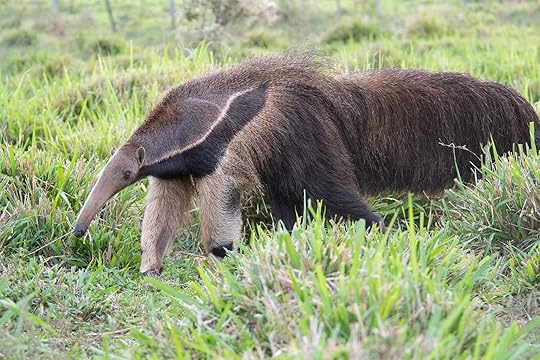
Brazilian tapirs, armadillos, crab-eating foxes, caimans, capuchin monkeys, and tiny marmosets are just the beginning. You’ve never heard a dawn chorus as loud and varied as one from the Pantanal — the birdlife here is off the scale.
Parrots of all shapes and colors scream from the treetops, brightly painted toucans and aracaris hop among the branches picking fruit with their oversized beaks, and giant rheas strut across the grassland.
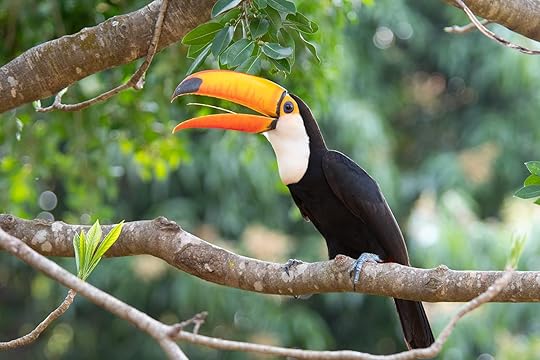
The prey-rich banks of the Cuiabá River that winds its way through the vast wetland are home to one of the largest jaguar populations in the world.
Having lost more than 40 percent of its range across South and Central America, the jaguar is listed as Near Threatened by the International Union for Conservation of Nature. It has already disappeared from parts of its range, and the Pantanal remains one of the last strongholds of the species.

Over recent years, the small community of Porto Jofre has become the jaguar-watching capital of the world.
While typically elusive nocturnal hunters, here, the jaguars are active all day long and can be spotted from a boat at any hour. The narrow tributaries make it easier to see the cats on the riverbanks, and the jaguars’ relaxed attitude toward the boats allows for some incredibly up-close and personal encounters.
Although, it has not always been that easy. Julio Andre Monteiro, the founder of Pantanal Trackers and the pioneer of jaguar tourism at Porto Jofre, was the first guide to bring foreign tourists to the river about 20 years ago. Back then, tracking jaguars was a challenging task, and the sound of a boat’s engine would send the cats dashing for cover.
It took five long years to habituate the jaguars to the motorboats, but with time the cats relaxed and accepted the boats as part of the river ecosystem. Today, you can watch the jaguars patrol the riverbanks, swim in the river, and if you’re lucky, you may even witness a hunt.

Cuiabá River is also home to the endangered giant otters. These highly social animals are the most entertaining creatures to watch in the wild. They exist in constant motion of catching fish, eating fish, grooming each other, playing with each other, and occasionally craning their necks out of the water to check out their surroundings.

Everything seems to be giant in the Pantanal. Apart from the giant otters and giant anteaters, there are capybaras (the largest rodent in the world), anacondas (the largest snake in the world), and even the largest flying parrot in the world — the endangered hyacinth macaw.

Exploring the Pantanal, it is easy to see that this giant wetland supports the highest concentration of wildlife in South America. However, less than two percent of this wilderness is safeguarded by legal protection on the federal level.
Most of the Pantanal is privately owned by cattle ranchers and soybean farmers. The majority of the region is threatened by deforestation, soil erosion, pollution from intensive farming, and construction of hydroelectric dams. Without adequate protection, the Pantanal is in danger of following the fate of the Amazon rainforest, 20 percent of which has already been lost.
Southern Pantanal
Almost 250 miles south of Porto Jofre, Beth Coelho — the owner of Fazenda San Francisco — is working to share her love of the Pantanal with Brazil’s future generations. Within an easy two-hour drive from Campo Grande, the capital city of Mato Grosso do Sul, the fazenda is both a working farm and an ecolodge that offers homestay experiences for school groups coming from as far as Rio.
There is so much wildlife at Fazenda San Francisco that it feels like a zoo without cages. Giant anteaters and yellow armadillos wander in the grassy paddocks, flocks of magnificent blue and yellow macaws feed noisily on palm fruit, and giant monitor lizards bake in the scorching sun.

The rice fields of the fazenda are home to another South American spotted feline — the ocelot. Attracted by the high numbers of native rats, the ocelots are not offended by passing safari trucks and happily pose for the future defenders of the Pantanal. 
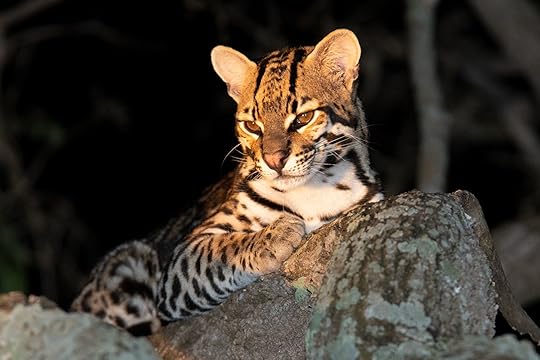

More like this: The 11 best places to travel to if you’re obsessed with monkeys
The post The Pantanal in Brazil is the best wildlife-watching spot in South America appeared first on Matador Network.

16 views to inspire travel

Paris, London, Barcelona, San Francisco — most of us are familiar with what these cities and their most famous monuments “look like.” In fact, with the internet nearly fused to our fingertips, it’s tempting to assume we know all the world’s places and panoramas.
But what does Earth look like from the top of Table Mountain in Cape Town? From the bright-as-day nighttime streets of Tokyo? From a patch of grass near a herd of zebras outside of Nairobi? There’s always more of the world to explore, something you haven’t encountered yet waiting to be uncovered. Here are 16 images you’ll want to see for yourself — and not just from a screen.
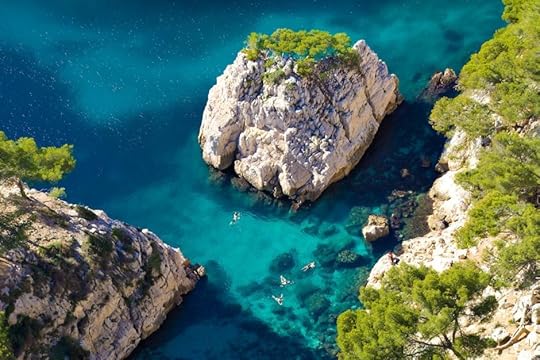
1
Calanques National Park, Marseille, France
A short bus ride (Bus 21, if you're taking notes) from Marseille gets you to the French coast, where you’ll find Calanques National Park. It’s mostly water, though there are 33 square miles made up of steep walls of limestone that fall directly into the sea—that’s what a calanque is. You swim around them, you jump off them, you hike all over them, you wander their pebbly beaches…the attraction is pretty simple here: Earth.
Photo: Shutterstock / Andre Quinou

2
Wat Arun, Bangkok, Thailand
If there’s one landmark in Bangkok to be deemed “iconic,” it’s Wat Arun, or Wat Chaeng, as it’s known locally. The “Temple of Dawn” sits right on the west bank of the Chao Phraya River, and it’s best arrived at by boat. Try to catch this Buddhist temple in the light of early morning, if you can.
Photo: Shutterstock / Nukul Chanada
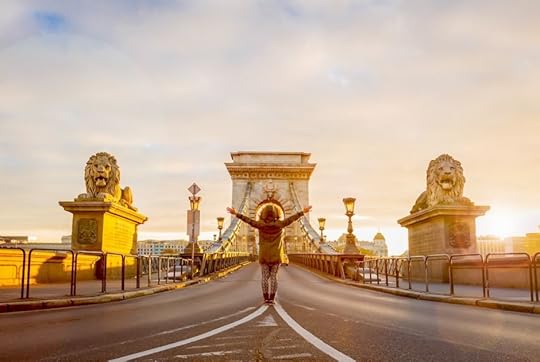
3
Széchenyi Chain Bridge, Budapest, Hungary
Most travelers remember their first truly beautiful city bridge. For some it might be Brooklyn, others Pont Neuf, St. Charles, Rialto, Golden Gate—Budapest’s chain bridge plays on the same team. At night it oozes Eiffel Tower elegance, acting as the proverbial red carpet up to Buda Castle.
Photo: Shutterstock / Littleaom

More like this: Say YES to these 6 lesser-traveled cities in Europe
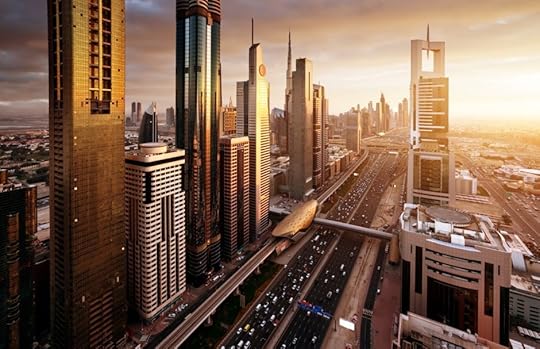
4
The Dubai skyline, UAE
Dubai's skyline borders on the fictional. The city is dedicated to everything luxury: shopping, eating, architecture, and nightlife, all rolled into one. The city's Burj Khalifa is the world's tallest building, topping out at 2,722 feet up in the sky. Most everything Dubai ends in "-est."
Photo: Shutterstock / Iakov Kalinin

5
Aksla viewpoint, Ålesund, Norway
There are few places in the world where Art Nouveau architecture is crammed onto the hillsides, desperately grabbing at land until it falls precipitously into the sea. Where mountains pop out of nowhere all the way to the edge of the horizon, until the ocean deepens and hides them from view. Ålesund—one of Norway’s larger towns—is one such against-all-odds place. Take it in from the Aksla viewpoint, a mere 418 steps up from Town Park. Technically, you can also drive…but where’s the beauty in that?
Photo: Shutterstock / Fure

6
The streets of New Delhi, India
Calm, golden light and orderly traffic are likely not two things that come to mind when you picture New Delhi, a city of over 21 million. And yet, here we are, the sun setting behind the Rashtrapati Bhavan, the president's residence. Considering size alone, it's one of the grandest presidential residences on the planet—matching the scale of New Delhi itself.
Photo: Shutterstock / Kriangkrai Thitimakorn

7
Nairobi National Park, Nairobi, Kenya
This national park is about six miles from the city center of Nairobi, Kenya’s capital—get the angle just right, and you can watch giraffes wandering in front of skyscrapers. It’s a strange juxtaposition that serves as a reminder that the wonders of nature are all around us. Black rhino, lions, leopards, cheetahs, hyenas, buffaloes, baboon, gazelle, hippos, and over 400 species of birds call the area home.
Photo: Shutterstock / Andrzej Kubik

8
Belém Tower, Lisbon, Portugal
Luckily for us, the 1500s were a tough time. That's when King John II ordered this tower built as part of Portugal’s first defense system. It still stands today, a stalwart guardian on a small island in the Tagus River, highlighting the Lisbon shore. It’s now a UNESCO World Heritage Site and one of Portugal’s Seven Wonders.
Photo: Shutterstock / TTstudio
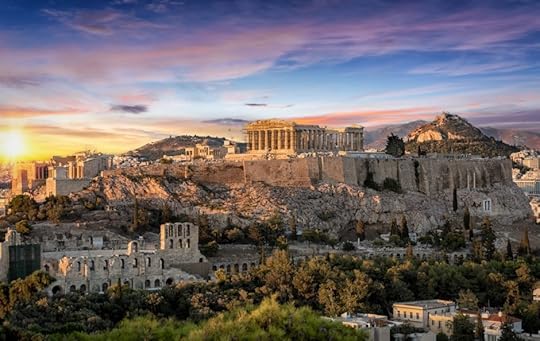
9
The Parthenon, Athens, Greece
The Parthenon, on the other hand, would look at the 1500s and laugh—it predates the Middle Ages by 1,900 years. Its first stone was laid in 447 BCE(!), and the remains of it stand today as a monument to the ancient Athenians, Classical Greece, and Doric architecture. This marvel for the ages was originally a temple to the Goddess Athena and a treasury, though history made sure it also briefly served as both a church and a mosque. Ah, the tides of culture.
Photo: Shutterstock / Sven Hansche

Travel on: 20 questions that capture the mindset of a traveler
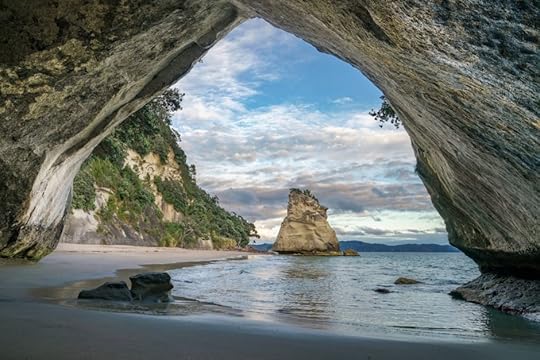
10
Cathedral Cove, Auckland, New Zealand
This is one of those spots that manages to be well-known despite the effort it takes to get there—that's how you know it's worth the trek. It's a 1.5-mile hike to these famous rocks, or you can arrive by boat or kayak. Spend some time wandering the Te Whanganui a Hei Marine Reserve, but also know you're a ten-minute drive from Hot Water Beach. Yep, hot water bubbles straight up through the dark-gold sand.
Photo: Shutterstock / Christian_B

11
Blue Mosque, Istanbul, Turkey
Blue ceramic tiles numbering some 21,000 adorn the interior of this monumental place of worship, giving the Sultan Ahmed Mosque its unofficial moniker. At night, the mosque shines blue, its domes and minarets (the tall, spiky towers) lit up opposite the city and the Sea of Marmara. Inside is just as picturesque, with 200 stained-glass windows and dome after dome after dome drawing your view skyward.
Photo: Shutterstock / Samet Guler

12
Petra, Amman, Jordan
Nearly every list of "places to see before you die" includes Petra. Its passages and facades are carved right into the pink sandstone, and the surrounding archaeological park is over 2,500 acres—there are trails, museums, and more recent excavations to see, apart from the wonder that is simply staring at famous structures like the Treasury and the Monastery (pictured above).
Photo: Shutterstock / Snapshopped
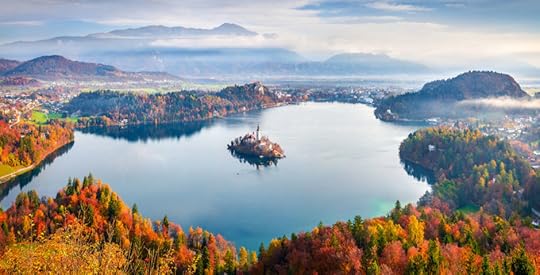
13
Lake Bled, Bled, Slovenia
Lake Bled’s beauty is like a set of matryoshka dolls: A church sits on a small island, which rises out of a glacial lake, which rests in the Julian Alps, which line one of the most beautiful countries in Eastern Europe. As if the Slovenian fairytale needed a little extra flair, Bled Castle overlooks it all, too.
Photo: Shutterstock / Andrew Mayovskyy

14
Cape Town and Table Mountain, South Africa
When the clouds lie low in the sky, Table Mountain—which never needs pointing out when you're in Cape Town—gets adorned with a puffy white “tablecloth,” as if important company are imminently arriving. Seeing this historical port city from any vantage point is a stunner, but don’t miss taking the Table Mountain Cableway all the way to the top. It's one panorama worth writing home about.
Photo: Shutterstock / Alexcpt Photography

15
Beach scenes, Mauritius
For starters, let’s cover the 101: Mauritius comprises a pair of main islands some 700 miles east of Madagascar and 1,200 miles east of the African mainland (yes, the Indian Ocean is huge). The other thing you’re probably wondering is if the water actually looks like this. By and large, yep. The world’s third-largest coral reef surrounds the island, and therefore its 100 miles of beaches and lagoons are protected from the open sea.
Photo: Shutterstock / Leoks
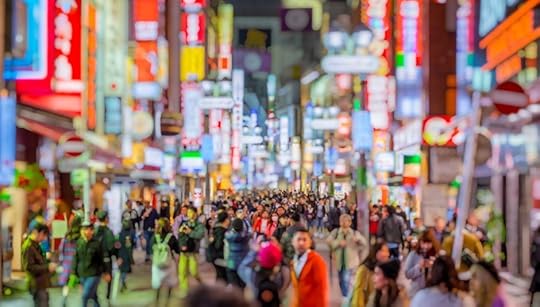
16
Shibuya, Tokyo, Japan
Shibuya has been called a “fashion paradise,” a Tokyo ward dedicated to elegance, class, and style. Blocks of cafés, restaurants, boutiques, and shops draw your eye, and the people-watching is just as notable as the merchandise. Here, it's hard not to feel the hum of the world vibrating around you.
Photo: Shutterstock / Siriwat Sriphojaroen
The post 16 views from around the world that will inspire you to book a trip NOW appeared first on Matador Network.

October 12, 2018
Why you should visit Lodz, Poland

Wouldya like to go to Lodz? Ok, that play on words will only make sense if you’re pronouncing it right, and we’re willing to bet you’re not. “Wooge” is about how you say the name of this former industrial center in Poland. With its dull manufacturing history, Lodz is usually skipped over in favor of Polish cities like Krakow and Warsaw. But this hipster hub with its intriguing architecture, museums, big city parks, and rich history is now bursting with creativity. For a window into Polish food, culture, and art — without the crowds and prices of the country’s better-known cities — check out Poland’s third-largest city. Here’s every awesome thing you can do in Lodz that proves it’s the next big city for European travel.
Explore Manufaktura and sleep in a former factory.
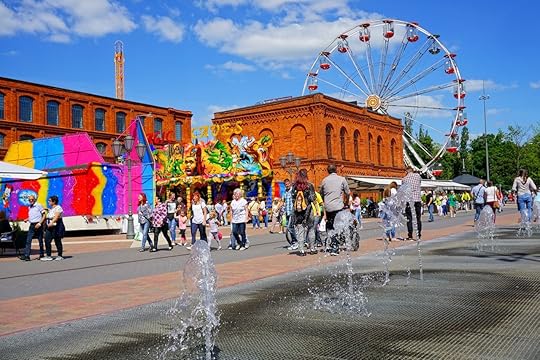
Photo: Mariola Anna S/Shutterstock
If you’ve only got a day or two in Lodz, spend your time at Manufaktura (Drewnowska 58, Łódź, Poland), a once sprawling industrial complex that’s now home to over 200 boutiques and shops, a farmer’s market, and outdoor cafes and restaurants. This former site of a massive textile manufacturing company even has a zip-line, trampolines, a bungee jump area, and an artificial beach where you can sip cocktails during summer months.
If you want to experience the mesh of the city’s history and rising creative culture in one space, this is it. In fact, you can still see some of the 19th-century looms in the Museum of the Factory, one of a number of museums located within the estate dedicated to the city’s industrial past. Afterwards, view contemporary art at the nearby MS2 Museum of Art.
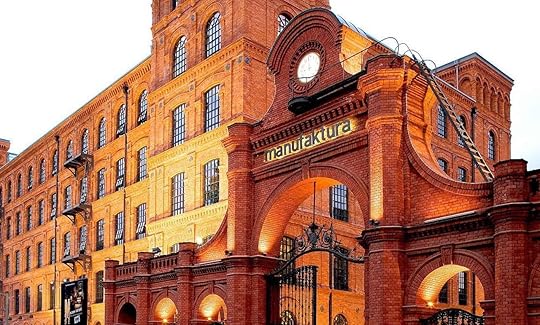
Photo: Vienna House Andel’s Lodz
For top-notch accommodation, Manufaktura boasts one of the city’s best hotels in its converted textile mill. The modern design of the Vienna House Andel’s Lodz hotel pays homage to the structure’s industrial past by incorporating pieces of machinery from its manufacturing days. Also, hidden throughout the hotel are stencils of the many faces of people involved in the mill’s history. One of them is original textile magnate himself, Izrael Poznanski, whose estate next door houses the Museum of the City of Lodz. Head upstairs for panoramic views of the city from a quirky top-floor pool that hangs off the side off the building.
Cruise one of Europe’s longest commercial pedestrian streets in a pedicab.
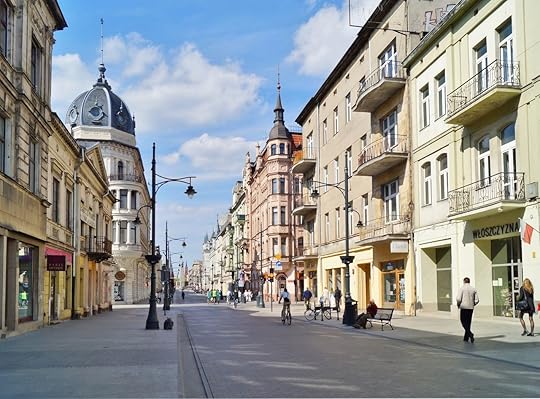
Photo: Mariola Anna S/Shutterstock
Just a few minutes walk from Vienna House, Piotrkowska Street stretches between Independence Square (Plac Niepodległości) and Liberty Square (Plac Wolności). This three-mile-long promenade is one of Europe’s longest commercial thoroughfares, and it’s the home of Lodz nightlife. Here you can walk “Holly-Lodz” — it works better with “Wooge” — Poland’s very own Hollywood Walk of Fame, where stars bear the names of the nation’s most prominent men and women in film.
If you don’t want to hoof it along the entire street, catch a pedicab. As you cruise in your inexpensive cycle-rickshaw, check out the colorful street art covering the walls of brick buildings that line the route. You can also scope out your next stop to eat, choosing from the city’s best cafes, bars, and restaurants that grace Piotrkowska Street. Hop off and head to a favorite hotspot amongst expats and locals alike, Lodz Kaliska. This labyrinth-style club amuses visitors with three floors of nonsensical chaos. Exposed pipes, glass floors, and one-way potty mirrors share space with art portraying Victorian-era breasts while whacky DJs bump beats into the early morning. Embrace the madness.
Stroll Lodz’s hipster hub.

Photo: Mariola Anna S/Shutterstock
You’ll get a sense of the city’s creativity as you stroll Piotrkowska. But duck into a cobbled alleyway for a drink at one of the many yards tucked off the main avenue to witness its real inventive genius. Number 217 hosts the street food festival and food market, and it has a handful of cafes and restaurants serving delicious and affordable fare. In Number 3 (Rosa’s Passage), you’ll be blown away by buildings covered with mirror shards that reflect the sunlight, the work of award-winning artist Joanna Rajkowska. The resplendent mirrors brighten up a city determined to reinvent itself as more than a dreary former industrial hub.
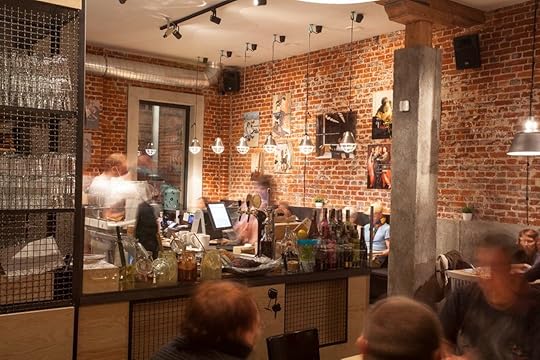
Photo: MITMI Restobar
The most popular yard is Off Piotrkowska — aptly named as it’s, well, off Piotrkowska Street. Here at Piotrkowska 138/140, on the grounds of a former cotton mill, over 50 businesses operate — from vintage boutiques to restaurants and galleries. This was one of the original modern efforts to transform old industrial structures into contemporary creative hubs. The inventiveness is palpable at places like MITMI Restobar or the Brick Coffee Factory. Come for some quality people-watching or pen your next novel.
Grab some tasty Polish grub.

Photo: Koperek Bistro/Facebook
Lodz’s restaurants serve up delicious, hearty cuisine at more affordable prices than in Krakow or Warsaw. If you remember nothing else about Polish food, recall the five Ps: pickles, preserves, potatoes, pierogi, and pampuchy. Traditional Polish dishes include pickled and smoked meats, vegetables, sauerkraut, and potatoes. You can have these ingredients packed into pierogi (think Polish ravioli) or served alongside pampuchy (steamed buns) for the ultimate “stick-to-the-ribs” feast. For dessert, Poles see no need to reinvent the wheel. Stuff the pierogies with plums and preserves to switch from savory to sweet and you’ve got yourself a delicious after-dinner course. To eat like a local, stop by Koperek Bistro at Off Piotrkowska for inexpensive homemade dishes prepared daily, or gorge yourself with meals like your babcia used to make from the rich menu at Chlopska Izba.

Photo: Vienna House Andel’s Lodz
No description of Polish dining should fail to mention vodka. In Lodz, though, it’s not just any vodka. Żubrówka Bison Grass Vodka is rye vodka flavored with grass grown in the Białowieża Forest, one of the largest swaths of the primeval forest that once stretched across most of mainland Europe. A herd of around 800 European bison, Europe’s heaviest land animal, graze on its grass. Down a shot and eat the blade of bison grass sticking out of your bottle to obtain the bison’s strength. If the locals look at you funny, just blame us — the grass is mostly decorative. Good news if you took our advice and chose to stay at Vienna House Andel’s Lodz: Its skyFLY rooftop bar offers baller bison grass vodka cocktails garnished with that sweet, Instagram-worthy view we mentioned.
Hit the parks.
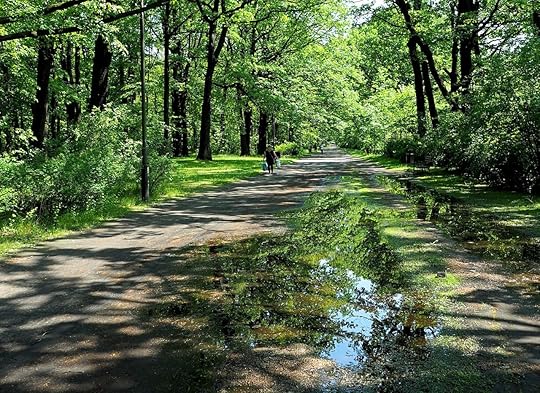
Photo: Janusz Baczynski/Shutterstock
After you’ve eaten your body weight in pierogies and a headache has settled in behind your eyes, walk off all the partying and feasting in one of Lodz’s many parks. Pick from around 40 urban parks, green spaces, and gardens located around the city. Park na Zdrowiu (basically “Park on Health”) has beautiful botanical gardens, as well as beer stalls and street food for those warriors forging ahead with the debauchery. Mickiewicza Park, north of the city center, has a large lake, an amphitheater for summer plays and concerts, and beautiful blossoms in springtime. Finally, walk the pretty paths meandering beneath 19th-century trees in Park Źródliska. Officials dedicated the space as a meeting ground for cotton mill workers and constructed The Palm House, which now hosts a range of funky plants, including those of the carnivorous variety.
Pay Respects to a grim World War history at the Jewish Cemetery and “Ghetto Field.”

Photo: NV77/Shutterstock
Efforts to revitalize and reinvent Lodz doesn’t mean residents have lost sight of their city’s darker moments in history. Despite the moss and undergrowth covering much of the city’s Jewish Cemetery, you can still make out names and Hebrew sayings and symbols on worn stones that mark the 180,000-plus people buried here. Most notable is the ornately decorated mausoleum of Izrael Poznański, the textile magnate and owner of what is now Manufaktura. Bodies of around 43,000 victims of the Holocaust from the nearby ‘Litzmannstadt’ ghetto lie within the reserved Ghetto Field section of the cemetery, serving as a somber but necessary reminder of an event that must never repeat itself.
Get educated at one of the many museums.
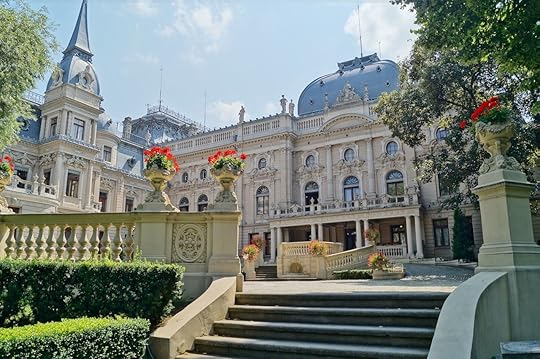
Photo: Mariola Anna S/Shutterstock
We’ve touched on many of the museums you can visit to get a glimpse into Lodz’s industrial past. Remember that when you explore Manufaktura, you’ll see the MS2 Contemporary Art Museum. You’ll also want to check out the original Museum of Modern Art, one of the oldest modern art museums in the world. It’s collection showcases genres from 20th- and 21st-century Poland, like cubism, purism, constructivism, and neoplasticism.
Then, check out a third location of Lodz’s Museum of Art at the Herbst Palace and Museum, which belonged to two of the city’s most prominent industrial families, the Scheiblers and the Herbsts. The Old Masters Gallery here has works from famous European artists from the 15th to 18th centuries.
Admire the range of architecture.
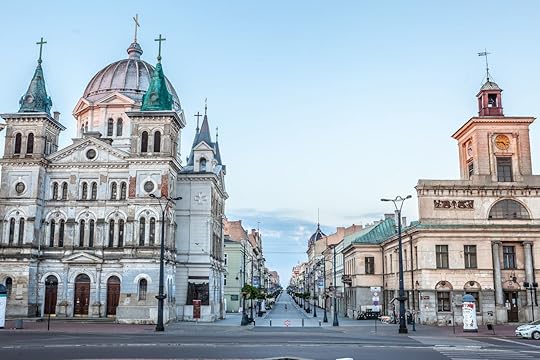
Photo: Grzegorz Czapski/Shutterstock
Beyond the abandoned mills and transformed factories, it’s not all brick and steel in Lodz. Take the Grand Theater, for example. From the outside, it looks like what you’d expect from a communist-era structure: a bunch of cubes, rectangles, and right angles stacked on top of one another. But inside, a comfortable, modern interior boasts astounding acoustics capable of doing justice to the orchestras, choirs, and opera singers who perform there. In contrast, the colorful Alexander Nevsky Cathedral stands out as a tribute to Russian Emperor Alexander II’s escape from an assassination attempt in the late 1800s, and its unexpected presence makes it worth a visit.
Peep the street art.
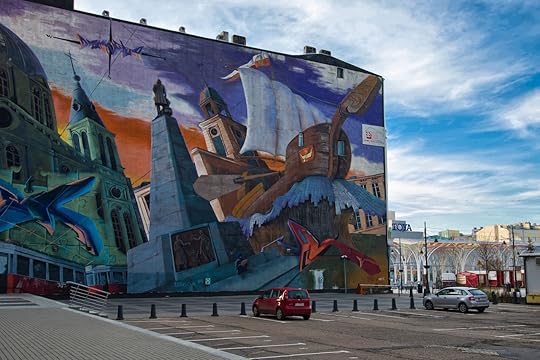
Photo: Avillfoto/Shutterstock
As you admire Lodz’s architecture, you’ll notice countless colorful and innovative murals. Many are the result of the city’s Urban Forms Foundation, which kicked off in 2009 to bring the post-industrial cityscape to life. Lodz has welcomed renowned artists from around the world to join local talent to rejuvenate the otherwise dull, beige exteriors of many of its structures. Thanks to the effective initiative, giant weasels now play on walls on Ogrodowa Street and a blue elephant flies on Uniwersytecka Street. See what else you can spot while you explore.

Photo: Mariola Anna S/Shutterstock
Lodz draws the power to reshape its future not just from the vibrant street art that covers its buildings but also from the buildings themselves. Old textile mills — with their vaulted ceilings, tall windows, and rustic interiors — serve as spacious sandboxes for modern designers to play in. Structures once built for looms to weave clothing now beckon creative individuals, urging them to weave together new styles with old industrial elements to create bold, modern spaces for the 21st century. Lodz’s most captivating results come from those artists and designers who embrace these remnants of an inescapable industrial past, incorporating them into their craft. Spend some time exploring the rising city of Lodz, and you’ll embrace them, too. 

More like this: The ultimate arts trip through Bucharest
The post Why Lodz, Poland, is the next big city for European travel appeared first on Matador Network.

Best campsites in major US cities
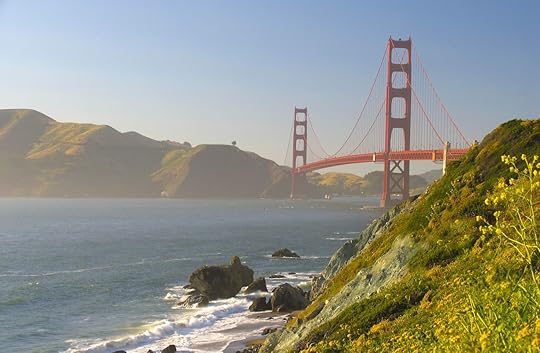
Camping often conjures up images of wild and remote places. However, in a pinch, you can get your dose of wilderness — or at least sleep in a tent — right inside a major metropolitan area. Not only can you experience an urban escape within buzzing places like Los Angeles and New York, but camping in these spots can be a cost-effective way to visit some of the most exciting cities in the US. Here are eight campsites that are all within city limits.
1. Cherry Creek State Park Campground, Denver

Photo: Images by Dr. Alan Lipkin/Shutterstock
Camp among the shady cottonwood trees in this gem of a campground in the southeastern corner of the Denver metropolis. Despite being in the middle of the city, Cherry Creek State Park feels remote and pastoral. The spacious and well-maintained sites are spread out over a sprawling area in the shape of six loops. Trails criss-cross the park, and bike paths in the campsite connect with the Cherry Creek Trail, which you can cycle all the way into downtown Denver.
A half-mile from the campsite is Cherry Creek Lake, a popular spot for boating and fishing. With a little luck, you may spot wild turkeys and golden eagles, and you’re bound to see deer wandering through the campsite early in the morning and again in the evenings. Sunset is a special time of the day when you can watch the sun sink over the Rocky Mountains. You can reserve online.
2. Anderson Road Campground, Nashville

Photo: Chrysalis Outdoor Adventures/Facebook
This woodland lakeside oasis is 10 miles east of downtown Nashville but inside city limits and easily accessible. The best sites, which you should book ahead of time, are next to the sparkling Percy Priest Lake and are secluded and peaceful. An early morning walk or run through the cedar glade is a great time to see deer and take in misty views of the lake.
Activities include fishing, boating, horse riding, and wildlife-spotting, and the lake has a small beach and a boat launch. Surrounded by 19,087 acres of woods and grasslands, it’s a quiet place to rest your head after checking out the country music scene in Nashville.
3. Rob Hill Campground, The Presidio, San Francisco
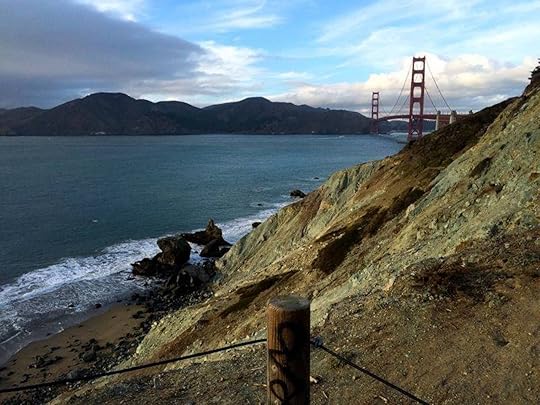
Photo: Camp Unalayee/Facebook
This campground is the only one within the city of San Francisco, and it’s in an impressive spot. Perched above Baker Beach, it’s located in the Presidio, a 1,500-acre national park in the north end of the city. Wake up amidst eucalyptus trees to the sound of surf and birdsong, and enjoy the spectacular city views of the Golden Gate Bridge and the Marin Headlands from Immigrant Point just across the road from the campsite. A trail leads down to the beach at the foot of rugged cliffs.
The campground accepts groups of up to 30 people, and the sites are arranged in such a way that groups tend not to encroach on one another’s space. In the morning, you can drive to Peet’s Coffee or Starbucks and come back with coffees and almond milk lattes before your campmates are even awake. Email in a reservation form to book.
4. Camp Gateway, Staten Island, New York

Photo: Felix Mizioznikov/Shutterstock
Camp Gateway is located at Fort Wadsworth, a historic military base that’s now part of the Coast Guard and the National Park Service on Staten Island, one of the five boroughs that make up New York City. The park wraps around the foot of the Verrazano-Narrows Bridge, so the views of the bridge and of New York Harbor are amazing — especially when you consider that you’re just a bus and ferry ride away from Manhattan.
From the campground, you can hike uphill for views of the Manhattan skyline or head to the boardwalk for a stroll or bike ride. The campground only has seven campsites, so you should be sure to reserve well ahead.
5. Musch Camp, Los Angeles

Photo: divanov/Shutterstock
A small and intimate campground with space for just eight tents, the Musch Camp is in Topanga State Park above LA’s Santa Monica Mountains. For a few dollars a night ($7 per person), you can pitch up and enjoy a night under the stars just a stone’s throw from the glamor and glitz of Los Angeles. Eucalyptus trees shade the campsites, which feel impressively rustic considering that the multi-lane freeways slice up the Los Angeles basin just below the mountains.
It’s called a hike-in camp, but this is LA after all — you can park pretty close by for $10. With 30 miles of hiking and biking trails, Topanga is the perfect escape within the SoCal megalopolis. When you wake up refreshed from your overnight, a five-mile hike takes you to the Parker Mesa Overlook where you have sweeping views of Santa Monica Beach and West Los Angeles. Campsites are first-come, first-served.
6. Emma Long Metropolitan Park, Austin

Photo: Emma Long Metropolitan Park/Facebook
This green urban space next to Lake Austin is a half-hour drive to the downtown area. Situated within Emma Long Metropolitan Park, it compromises 1,000 acres of ash, oak, and juniper trees and a mile of shore. The campsites along Texas’s Colorado River — which is different from the really big Colorado River running from Colorado to Mexico — offer a variety of options, from basic to premium on three large sites. You can see the selections from the options online.
Some excellent trails nearby include the 2.5-mile Turkey Creek Trail, which has stream crossings to splash in and rocks aplenty to scramble over. The beach area has lots of picnic tables and is a relaxing place to enjoy a packed lunch, take a refreshing dip, and then watch the sunset across the lake as fireflies take to the night skies.
7. Larry and Penny Thompson Park, Miami
View this post on InstagramA post shared by Tim Horvath (@travelingjones) on Feb 20, 2018 at 6:11am PST
This oasis in South Miami is a safe and peaceful place to set up base for easy access to the attractions of the city. Situated next to the zoo, the Larry and Penny Thompson Park is a natural playground of 270 acres of woodland, bridle trails, and hiking paths.
A freshwater lake with its own beach, as well as three waterslides that are carved into mountain rock and flow into a pool, are tempting ways to cool down in the Florida heat. Mango, avocado, and lychee trees surround the quiet campground, and the only clue that you are in the middle of a major city is the occasional wail of a siren. You can book online.
8. Campland on the Bay, San Diego
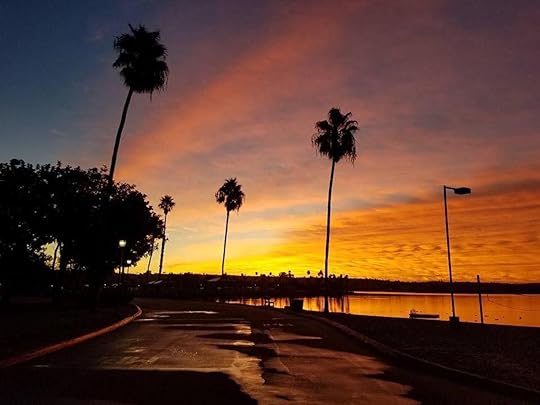
Photo: Campland on the Bay/Facebook
Campland is not exactly a quiet escape in the middle of the city. This campground on the shores of Mission Beach is aimed primarily at families with a lot of energy. Non-stop events include yoga on the beach and dodgeball games, and you’ve got access to a swimming pool, game room, and restaurant. It’s close to the San Diego Zoo and the Gaslamp Quarter, and you can see the nightly fireworks from nearby SeaWorld without having to pay the entrance fee.
Accommodations range from primitive tent sites to super sites that each have a jacuzzi and patio. It may not be for purists, but Campland is a good choice for families who want the convenience of arranged events and having everything close by. You can’t beat its location in the heart of San Diego. Reserve on the website. 

More like this: Glamping experiences around the US for campers who hate roughing it
The post The best camping spots right inside major US cities appeared first on Matador Network.

Lapland is hiring Christmas Elves

A lot of people take temporary jobs over the holiday season to make some extra cash, but this might be the best, and most coveted, holiday job out there. Finland’s Lapland Safaris is looking for Elves this Christmas season to help guide visitors on holiday, lead them to buses, and generally spread Christmas cheer in the Arctic.
According to the job posting, “An Elf is at the same time an entertainer, a guide, and mythical creature of Christmas,” and Elves should be “energetic, outgoing, positive persons with good customer service skills.”
If you really want a leg up on the competition, you should know a language other than English, especially French, Spanish, or German. And don’t worry if you don’t have any prior Elf experience. If chosen, you’ll take part in the “Arctic Hospitality Guide training,” which will include learning necessary Elf communication skills.
Opportunities are currently available in Saariselkä, Levi, Rovaniemi, Hetta, Olos, and Ylläs. And you shouldn’t expect a warm, cozy hearthside experience. You’ll be pretty far north — Lapland is considered the tourist North Pole as the actual North Pole is in the middle of the Arctic ocean — and the job is only for Elves who can handle the cold.
The job runs from the end of November to early January. To submit your name for consideration, fill out the application here. And be sure to stick to the four main food groups: candy, candy canes, candy corn, and syrup. 
H/T: Travel & Leisure

More like this: Magic Spot: The Arctic Hideaway in Norway
The post Lapland is hiring Christmas Elves to work in the North Pole this winter appeared first on Matador Network.

New Starbucks in shipping containers

This new Starbucks in Taiwan is taking innovative recycling to a whole new level. Part of the coffee giant’s commitment to sustainable building, its first store in the Asia Pacific will consist of 29 white shipping containers, stacked in a grid-like formation. Designed by architect Kengo Kuma, the containers will house 3,444 square feet of space with a unique aesthetic designed for maximum comfort. According to a Starbucks press release, “From one end of the container, customers can enjoy views of this beautiful mountain range. The other end is decorated with graphics that tell coffee stories.”

Photo: Starbucks
While the Starbucks’ design might appear cold and claustrophobic from the outside, a series of skylights actually allows an abundance of natural light, lending a cozy, homey atmosphere to the space. The placement of the containers might seem somewhat random, but it was actually inspired by the Chinese bucket arch and the leaves and branches of a coffee tree. The bucket arch uses stacked beams, and the coffee tree evokes the natural order of organic foliage.
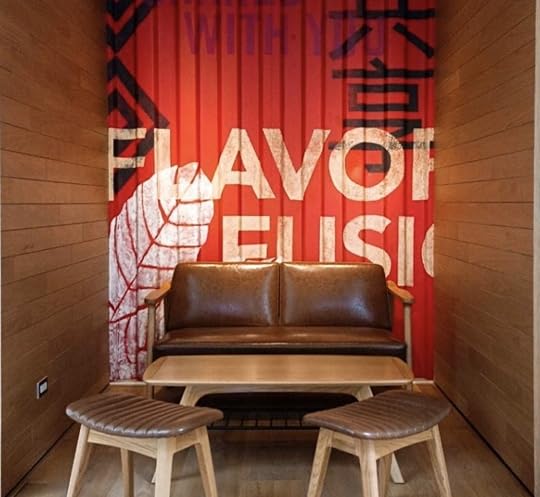
Photo: Starbucks
While it might be the first store built entirely of shipping containers, Starbucks has over 40 locations worldwide that utilize the shipping container as a primary building block. Shipping containers have become a relatively common architectural trend, normally used to promote the reduction and reuse of industrial waste and materials. Storage container properties can also often occupy sites that traditional buildings can’t, making them a more versatile and convenient material.
Fans of Kengo Kuma will be delighted to learn that in addition to designing this building, he’s also behind the highly anticipated Starbucks Reserve Roastery in Tokyo coming later this year. 
H/T: Refurbishment Architecture

More like this: 7 easy things you can do to be a more sustainable traveler at hotels
The post This new Starbucks in Taiwan is built entirely out of shipping containers appeared first on Matador Network.

10 things you need to do in NYC

There’s so much to do in New York City and so little time to do it. The five boroughs alone span an area of around 300 square miles and contain a population of over 8.5 million, so it makes sense that there’s an abundance of activities wherever you go. New things to do pop up every day, but there are certain experiences that are so authentically New York that you have to do them, no matter if you live here or are visiting. Here’s our list of 10 experiences that you have to have in NYC before you die.
1. Go to a Yankees or Mets baseball game.
View this post on InstagramA post shared by New York Yankees (@yankees) on Dec 29, 2017 at 2:12pm PST
Baseball is a US pastime, and there’s nowhere you can see that passion more clearly than in New York. There are two Major League Baseball teams, the Yankees and the Mets. The rivalry runs deep between players and fans alike, so you’re not going to want to show up to Yankee Stadium or Citi Field showing support for the opposite team — if you do support one in particular but end up at a game for the other, keep it to yourself. The only time it’s safe to show your true colors in enemy territory is if it’s a Subway Series game. But whatever the game, you’ll feel the intense fan excitement and passion reverberating through the stadium, which is an experience in itself.
2. Witness Manhattanhenge.
View this post on InstagramA post shared by Kelly Kopp (@newyorkcitykopp) on May 29, 2018 at 6:38am PDT
One of the best things about Manhattan is that most of the borough sits on a grid system, making it extremely easy to navigate. Another great thing is Manhattanhenge. Manhattanhenge only happens twice a year and occurs when the sun lines up perfectly with the grid, lighting up the north and south ends of every cross street, draping the city in radiant orange and yellow. The phenomenon usually happens for two consecutive days in May and then again in July.
3. Rush a Broadway show.
View this post on InstagramA post shared by Lauren ▪️ NYC Adventures (@schoolbooksandsubways) on May 5, 2018 at 2:37pm PDT
Sure, you could buy your tickets in advance to Anastasia, Chicago, or Mean Girls online, but there’s nothing more New York than lining up hours in advance at the crack of dawn to nab seats at a fairly discounted price rather than paying into the three-digit range. Some shows, such as Hamilton and Phantom of the Opera, only have digital lotteries where you submit an entry online and hope for the best. But most have an in-person rush policy where you can try to buy cheaper tickets before the theater opens. There are a limited amount of rush tickets that are first-come, first-served, and Broadway theaters usually open at 10:00 AM, so it’s not unusual to hear of people lining up at 7:00 AM for coveted double-digit tickets. Waking up this early not only affords you a chance for tickets, but you’ll also get to watch as the city rises and see all manner of people begin their daily routines.
4. Walk the Brooklyn Bridge then watch the sunset over the skyline.
View this post on InstagramA post shared by Erick (@ericknyc_) on Sep 2, 2018 at 7:14am PDT
Opened in 1833, the Brooklyn Bridge is a hybrid of a cable-stayed and suspension bridge. Start your walk across the National Historic Landmark a couple hours before sunset to give yourself enough time to take photos of the view from either side of the bridge, snap a few shots of you and your companions in front of the iconic limestone towers, then make your way over to Brooklyn. The bridge will let you off in between the Brooklyn Heights and Dumbo neighborhoods where you can explore and grab a bite to eat at places like the famous Grimaldi’s Pizza. But you’re going to want to head to the water sooner rather than later. You can either post up on the left side (if you’re facing Manhattan) of the bridge in Brooklyn Bridge Park or on the right side near Jane’s Carousel to watch the sunset over the skyline.
5. Ice skate in Wollman Rink.
View this post on InstagramA post shared by Wollman Rink ⛸ (@wollmanrink) on Oct 17, 2017 at 3:40pm PDT
Built in 1950, Wollman Rink opens every October until the end of the winter season. The ice skating rink is located in Central Park and is set against a backdrop of skyscrapers and either fall foliage or snow-covered trees. Rates vary depending on what day you’re going and your age, but it’s typically $6 for children ages 11 and under, $12-$19 for adults, and $5-$9 for seniors. That doesn’t include skate rentals, which are a separate $10 per person. Lockers are also available at a price of $11 with a $6 deposit refunded upon your exit. No matter your experience level, you’ll definitely enjoy a few hours of ice skating here, but if you’re really that worried, the rink does offer lessons.
6. Drink at a speakeasy.
View this post on InstagramA post shared by Colm Flynn (@colmflynnire) on Aug 21, 2018 at 7:08pm PDT
New York City was once full of speakeasies, and even with the end of Prohibition and years past, there’s a good number still operating. Except now, it’s more for the experience than hiding from the law. One of the bigger venues is The Back Room in the Lower East Side. The address is 102 Norfolk Street, and to find it, you’ll need to look for a sign hanging on a short iron gate that reads “Lower East Side Toy Company.” Push past the gate and head downstairs; once you’ve reached the bottom, go up the staircase in the very back of the space. If you see cocktails being served in teacups and beer in brown bags, you’ve arrived.
7. Ride the Cyclone at Coney Island.
View this post on Instagram
Matador Network's Blog
- Matador Network's profile
- 6 followers



